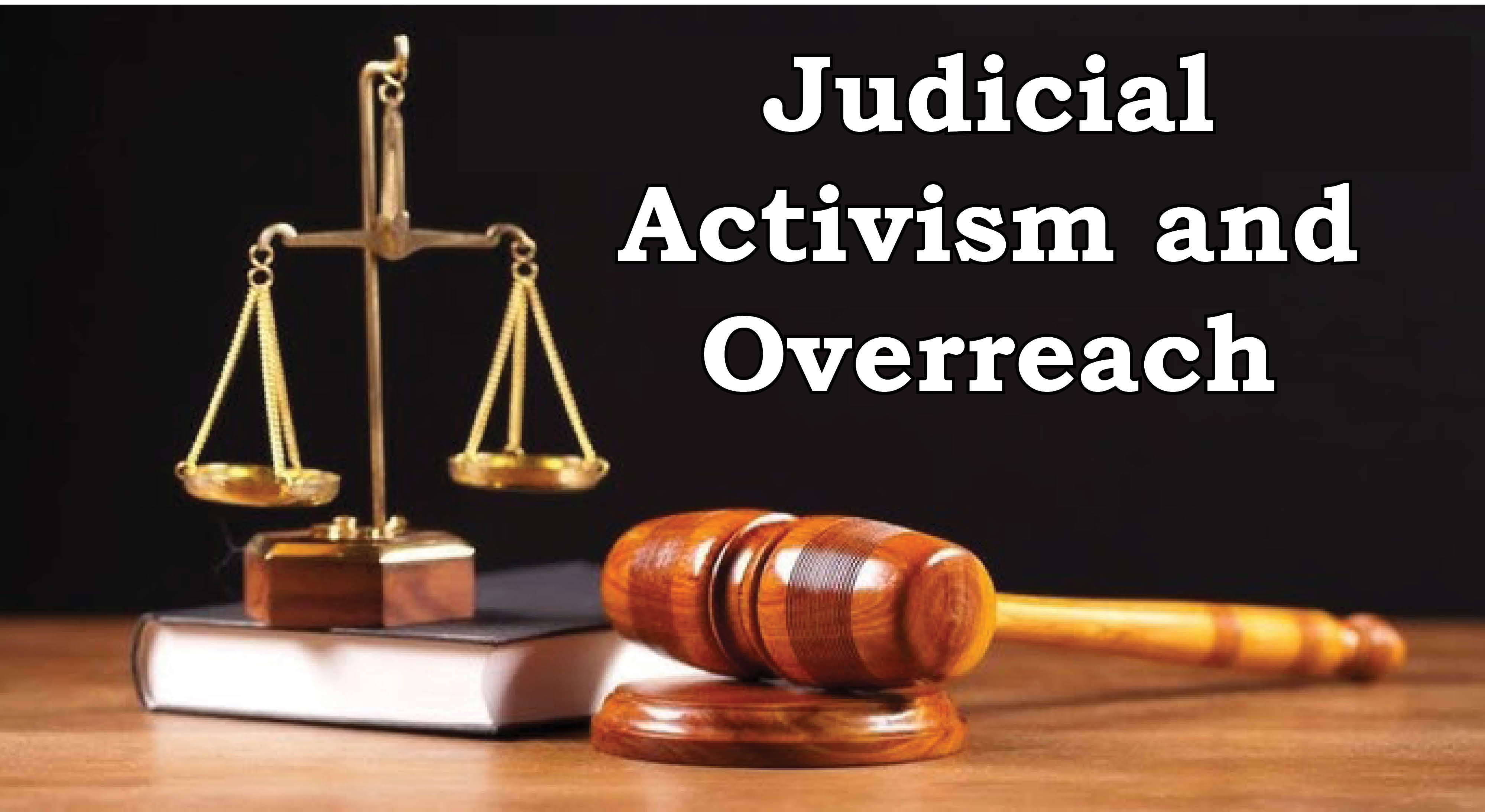Judicial overreach is a term used to describe instances where the judiciary exceeds its boundaries, interfering with the functions traditionally carried out by the executive or legislature. In India, the fine line between judicial activism and judicial overreach has been a subject of extensive debate. While judicial activism is seen as a means to protect citizens' rights and ensure justice, judicial overreach is often viewed as a threat to the separation of powers, an essential pillar of democratic governance.
Recent developments—such as the Supreme Court’s directive imposing a three-month timeline on the President for deciding on state Bills reserved by Governors—have intensified the debate over judicial overreach.
Separation of Powers in the Indian Constitution
The Indian Constitution is based on a structural separation of powers, where:
- The Legislature formulates laws.
- The Executive implements them.
- The Judiciary interprets laws and adjudicates disputes.
Although India does not follow a strict separation as in the U.S. model, a functional division ensures that no branch oversteps its constitutional limits. Judicial overreach occurs when the judiciary intervenes in matters of governance or policy-making, thus straying beyond its interpretive and adjudicative roles.
The judiciary's mandate is to ensure that laws and executive actions align with the Constitution. However, when it begins issuing directions to other constitutional authorities—particularly without enabling legislation or democratic deliberation—it may distort the principle of institutional balance.
Supreme Court's Directive on Reserved Bills: A Case in Point
A recent example highlighting these constitutional complexities is the Supreme Court’s 2024 judgment prescribing a three-month deadline for the President to decide on state Bills reserved by Governors. The Court declared that any delay beyond this period must be justified with recorded reasons and invalidated the act of reserving Bills for Presidential consideration after they had been passed again by a state legislature.
While the intent was to uphold federal efficiency and prevent legislative stagnation, the judgment raised serious concerns about judicial intervention in executive timelines and discretionary powers. The directive was interpreted by many in the executive as a classic case of judicial overreach for the following reasons:
- The President is a constitutional authority with defined discretionary powers that cannot be easily constrained by judicial timelines.
- Issuing binding directives to the President may disrupt the delicate balance between constitutional functionaries.
- The judiciary, by prescribing timelines, ventured into the executive’s functional domain without a statutory framework to support such action.
This ruling invites deeper reflection on how far judicial review can go before it becomes interference—a central concern in debates about overreach.
|
Aspect |
Judicial Activism |
Judicial Overreach |
|
Objective |
To ensure justice |
Overstepping boundaries with hyper-activism |
|
Legitimacy |
As per the Constitution |
Violation of constitutional limits |
|
Examples |
Environmental protection, human rights |
Interference in policy-making |
|
Impact |
Positive |
Threat to democratic balance |
Other Key Instances of Judicial Overreach:
1. Shyam Narayan Chouksey v. Union of India (2018) – The Supreme Court’s directive mandating the playing of the national anthem in cinema halls was criticized for infringing upon personal liberties and interfering with cultural policy—an executive function.
2. National Judicial Appointments Commission (NJAC) Judgment (2015) – By striking down a constitutional amendment that aimed to reform judicial appointments, the Court was seen as protecting institutional interests at the cost of broader accountability.
3. Liquor Ban on Highways (2016) – The Supreme Court banned liquor vends within 500 meters of highways, a decision that significantly affected state revenue and policy autonomy, based on tenuous connections with road safety.
4. Jolly LLB II Case (2021) – The Bombay High Court’s appointment of a committee to censor the film despite certification by the Central Board of Film Certification was criticized as judicial overstepping into regulatory authority.
The Role of Article 142 and Institutional Accountability
The use of Article 142—which empowers the Supreme Court to pass orders necessary for “complete justice”—has played a significant role in expanding the Court’s functional reach. While often justified in exceptional situations, repeated reliance on Article 142 raises structural concerns:
- It may bypass legislative or executive frameworks, allowing the Court to act without statutory constraints.
- It risks creating binding norms without democratic debate or institutional checks.
Additionally, questions of judicial accountability have emerged in recent years. The judiciary’s relative immunity from external oversight, especially concerning internal inquiries and ethical standards, creates an accountability deficit. Critics argue that for judicial independence to be meaningful and legitimate, it must be accompanied by transparent institutional mechanisms.
Federalism and Governance: Competing Considerations
The Supreme Court’s directive on Presidential assent can also be viewed through the lens of federalism. Governors delaying assent to state Bills has been a recurring issue, often resulting in governance paralysis. In this context, the judiciary's intervention may be seen as reinforcing state legislative authority and curbing central encroachment.
However, setting rigid timelines for the President, who functions based on Cabinet advice, potentially centralizes power in the judiciary and erodes the executive’s discretionary space. It also risks transforming judicial review from a constitutional safeguard into a supervisory mechanism, altering the balance of power among the branches of government.
Judicial Restraint: The Antidote to Overreach
Judicial restraint emphasizes the judiciary's obligation to exercise self-discipline and avoid encroachment on policy domains. The doctrine is not about judicial passivity, but about respecting institutional roles and avoiding governance by judiciary.
Landmark cases like the Ayodhya judgment (2019), where the Court chose to base its verdict on evidence rather than emotion, and Indian Medical Association v. Union of India (2011), where it avoided interfering in regulatory decisions about medical education, highlight instances of appropriate restraint.
Such approaches preserve the judiciary’s credibility while allowing democratic processes to function.
Conclusion
Judicial overreach remains a contentious and evolving issue in India’s constitutional landscape. The recent directive mandating timelines for Presidential assent reflects the judiciary’s proactive stance in addressing governance inefficiencies but also raises pressing concerns about constitutional boundaries and federal equilibrium.
While judicial review is integral to the protection of constitutional values, it must operate within a framework of mutual respect and restraint. As India’s democracy matures, the need for institutional accountability across all branches—including the judiciary—becomes paramount.
A deeper and more transparent dialogue is essential to ensure that judicial interventions are balanced, democratically grounded, and aligned with the spirit of the Constitution. Only then can the judiciary preserve its role as the guardian of constitutional morality without overshadowing the foundational principles of democratic governance.
| Main question: Judicial activism is essential for the protection of constitutional rights, but judicial overreach undermines the democratic fabric of governance. Critically examine this statement with reference to recent Supreme Court directives. |








